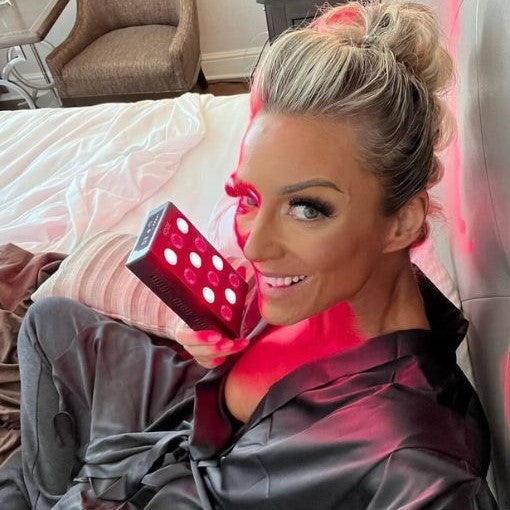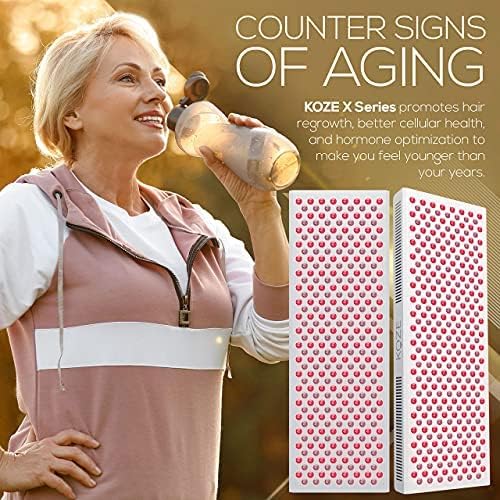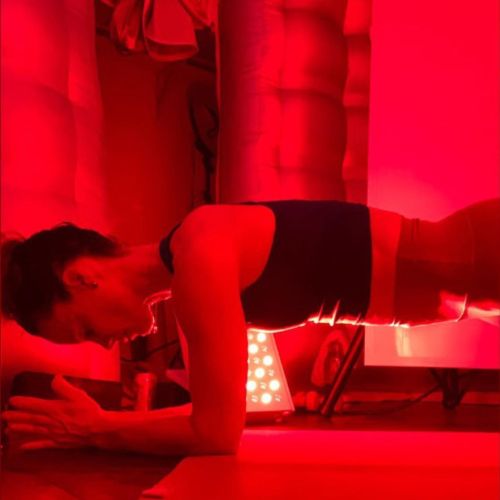
Do Facials Help With Wrinkles
Facials have long been a staple in the world of skincare, celebrated for their ability to cleanse, exfoliate, and nourish the skin. However, as we age, our skin concerns often shift towards combating the signs of aging, particularly wrinkles. This leads us to the question: Do facials help with wrinkles?
In this comprehensive guide, we'll delve into the world of facials and their impact on wrinkles. We'll explore the causes of wrinkles, how various facial treatments can address them, and the role of professional treatments in wrinkle reduction. We'll also discuss the importance of supporting your skin between facials and how red light therapy can complement your anti-aging efforts.
So, whether you're a skincare enthusiast or someone looking to diminish the appearance of wrinkles, this article will provide you with the insights you need to make informed decisions about your skincare regimen.
Understanding Wrinkles
Wrinkles, a natural part of the aging process, are lines and creases that form on the skin. They primarily appear on sun-exposed areas of the body, such as the face, neck, hands, and forearms. As the skin ages it can sag, and fine lines start to appear.
Before we delve into how facials can combat wrinkles, it's essential to understand what causes them and the different types we encounter.
Causes of Wrinkles:

1. Aging: As we age, our skin naturally becomes less elastic and more fragile. Decreased production of natural oils dries out your skin and makes it appear more wrinkled.
2. Sun Exposure: Ultraviolet (UV) light speeds up the natural aging process, breaking down the skin's connective tissue—collagen and elastin fibers in the deeper layers of skin.
3. Smoking: This accelerates the aging process of your skin, contributing to wrinkles. Smoking reduces blood flow to the skin, depriving it of essential nutrients and oxygen.
4. Repetitive Facial Expressions: Actions such as squinting, frowning, or smiling lead to fine lines and wrinkles. Each time you use a facial muscle, a groove forms beneath the surface of the skin.
Types of wrinkles:

-
Expression Lines: Typically found around the mouth, eyes, and forehead, these are a result of facial movements and expressions.
-
Elastotic Wrinkles: Caused by sun exposure, these are seen as creases on the cheeks, lips, and base of the neck.
-
Gravity Folds: As gravity pulls on the skin, it can lead to the sagging and folding of the skin, creating wrinkles.
Factors accelerating wrinkle formation:

-
Sun exposure: a major factor that can be mitigated with regular use of sunscreen.
-
Dehydration: lack of moisture can make skin appear more wrinkled.
-
Poor nutrition: a diet low in vitamins and minerals can affect the health and elasticity of your skin.
Understanding these causes and types of wrinkles is crucial in selecting the right treatments and preventative measures. Facials, when chosen correctly, can target these issues specifically, offering hydration, improving circulation, and promoting collagen production to mitigate the signs of aging.
How Facials Can Help with Wrinkles
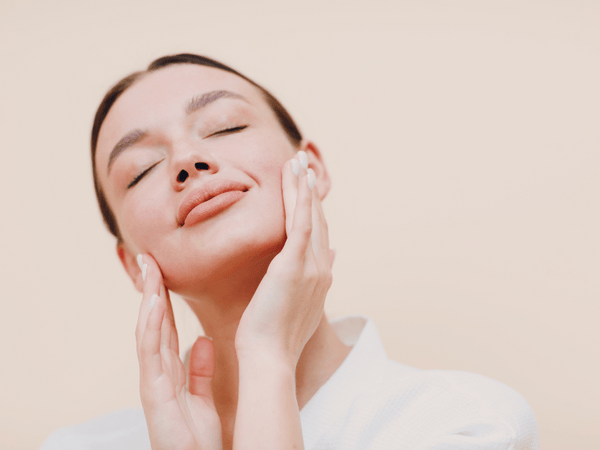
Facials are not just about indulgence; they're a crucial component of a comprehensive skincare routine, especially when it comes to combating wrinkles. While they cannot entirely erase the signs of aging, they can significantly reduce the appearance of wrinkles and fine lines. Here's how facials can help:
Hydration: Many facials focus on deeply hydrating the skin. Moisturized skin appears plumper, which can diminish the appearance of fine lines and wrinkles.
Exfoliation: Facials often include exfoliation, which removes and exfoliate dead skin cells from the surface of the skin. This process can help smooth out wrinkles and improve skin texture.
Increased Circulation: The massage techniques used during facials can increase blood flow to the skin, promoting collagen production and giving the skin a healthy glow.
Stimulation of Collagen Production: Certain facials, especially those involving technologies like microcurrents or LED light therapy, can stimulate collagen production, uneven skin tone, improve skin elasticity and reducing the appearance of wrinkles.
Types of Facials for Wrinkles:
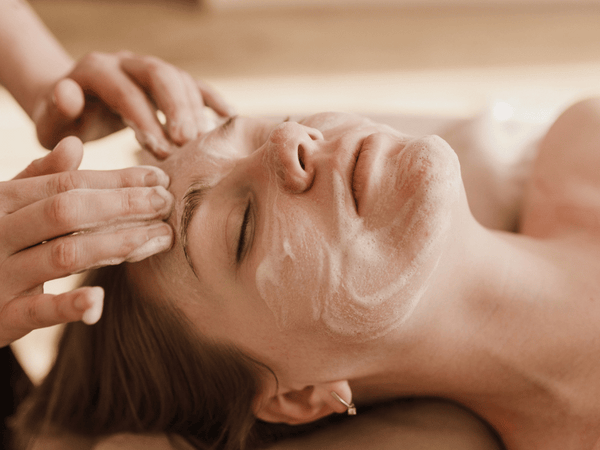
1. Anti-Aging Facials: Specifically designed to target signs of aging, these facials often include ingredients like retinoids, antioxidants, and peptides.
2. Collagen Facials: These facials focus on replenishing the skin's collagen, which can reduce the appearance of wrinkles and improve skin firmness.
3. Hydrating Facials: Aimed at deeply moisturizing the skin, these facials can plump up the skin and reduce the visibility of fine lines and acne scars.
Key Ingredients in Anti-Wrinkle Facials:

-
Retinoids: are known for their ability to reduce wrinkles and fine lines by increasing collagen production.
-
Antioxidants: Ingredients like vitamin C and E can protect the skin from free radicals and promote a youthful appearance.
-
Peptides: These amino acids can stimulate collagen production and repair damaged skin.
While facials can be beneficial in reducing the appearance of wrinkles, it's essential to have realistic expectations. Facials can provide temporary improvements, but they are not a permanent solution to aging skin. Regular treatments, combined with a consistent skincare routine, are necessary to maintain the results.
The Role of Professional Treatments in Wrinkle Reduction
While facials are an excellent way to maintain healthy, youthful-looking skin, professional treatments can take your anti-aging regimen to the next level. These treatments often provide more dramatic and long-lasting results than traditional facials.
Here are some professional treatments that can significantly reduce the appearance of wrinkles and result to more radiant skin:
1. Microdermabrasion: a renowned tactic for skin rejuvenation. This is a non-invasive procedure that exfoliates the top layer of skin, removing dead skin cells and promoting the growth of new, healthier skin. It can reduce the appearance of fine lines and wrinkles, as well as improve skin texture and tone.
2. Chemical Peel: Chemical peels involve the application of a solution to the skin, which causes the top layers to peel off. This process reveals smoother, less wrinkled skin underneath. There are different levels of chemical peels, from superficial peels to deep peels, depending on the extent of skin aging.
3. Laser Therapy: Laser treatments use focused light to target the skin's deeper layers, stimulating collagen production and skin renewal. This can lead to a reduction in wrinkles and an improvement in skin firmness and elasticity.
4. Botox Injections: Although not an anti aging facial, Botox is a popular professional treatment for wrinkles. It temporarily paralyzes the muscles that cause expression lines, resulting in a smoother appearance.
5. Dermal Fillers: These are injectable treatments that can fill in deep wrinkles and add volume to the skin, giving it a more youthful appearance.
Benefits of Professional Treatments:
-
Targeted Results: Professional treatments can target specific areas of concern, such as deep wrinkles or loss of volume.
-
Longer-Lasting Effects: Many professional treatments offer results that last for several months or even years.
-
Complementary to Facials: Professional treatments can enhance the results of regular facials, providing a comprehensive approach to anti-aging.
Disclaimer: It's important to consult with a dermatologist or licensed esthetician to determine the most suitable professional treatment for your skin type and concerns. Additionally, these treatments should be part of a holistic approach to skincare, which includes regular facials, a consistent at-home routine, and lifestyle choices that support skin health.
10 Tips Supporting Your Skin Between Facials
To maximize the benefits of facials and professional anti-aging treatment, it's crucial to maintain a consistent skincare routine at home. Here are some tips to support your skin between facials that Can Help Fight Signs of Premature Skin Aging.:
1. Cleanse Daily: To get rid of makeup, oil, and grime without depriving your skin of its natural oils, use a mild cleanser.
2. Moisturize Regularly: To keep your skin hydrated and plump, use a moisturizer that is appropriate for your skin type. Look for products containing hyaluronic acid or ceramides.
3. Sun Protection: Wear a broad-spectrum sunscreen with an SPF of at least 30 every day, even on cloudy days, to protect your skin from harmful UV rays.
4. Exfoliate Weekly: Use a mild exfoliant once or twice a week to remove dead skin cells and promote cell turnover.
5. Use Anti-Aging Products: Incorporate products with active ingredients like retinol, peptides, and antioxidants into your routine to target wrinkles and fine lines.
6. Stay Hydrated: Drinking plenty of water helps keep your skin hydrated from the inside out.
7. Maintain a Healthy Diet: Eating a balanced diet rich in vitamins and antioxidants can support skin health and reduce the signs of aging.
8. Get Enough Sleep: To allow your skin to heal and rejuvenate, try to get between seven and nine hours of sleep each night.
9. Manage Stress: Practice stress-reduction techniques like meditation or yoga to prevent stress-related skin issues.
10. Avoid Smoking: Smoking accelerates the aging process and can contribute to wrinkles.
By following these tips, you can extend the benefits of your facials and professional anti aging facial treatment, keeping your skin looking youthful and radiant.
Red Light Therapy for Wrinkle Reduction
Red light therapy (RLT) has emerged as a popular and effective treatment for reducing wrinkles and improving skin health. It involves exposing the skin to low levels of red or near-infrared light, which penetrates the skin to stimulate cellular repair and rejuvenation.
How Red Light Therapy Works:
1. Stimulates Collagen Production: RLT boosts the production of collagen, a protein essential for maintaining skin elasticity and firmness, which helps manage sagging skin.
2. Increases Circulation: The therapy enhances blood flow to the skin, delivering nutrients and oxygen that support skin health.
3. Reduces Inflammation: RLT has anti-inflammatory properties, which can help reduce the redness and swelling associated with skin aging.
4. Promotes Healing: By stimulating cellular repair, RLT can accelerate the healing process of damaged skin.
Benefits of Red Light Therapy for Wrinkles:
-
Non-Invasive: RLT is a painless, non-invasive treatment that doesn't require downtime.
-
Safe for All Skin Types: It's suitable for all skin types and doesn't carry the risk of burning or irritation.
-
Complements Other Treatments: RLT can be used in conjunction with facials and professional treatments to enhance overall results.
How to Incorporate Red Light Therapy into Your Skincare Routine:
Professional Treatments:
Many spas and dermatology clinics offer RLT as part of their services. These sessions can be combined with facials for maximum benefit.
At-Home Devices:
There are various RLT devices available for home use, allowing you to incorporate the therapy into your daily skincare routine.
It's important to note that while RLT can provide significant benefits for the skin, it's not a standalone solution for wrinkles. It should be used as part of a comprehensive skincare regimen that includes regular facials, professional treatments, and a consistent at-home routine.
Common Myths About Facials and Wrinkles
When it comes to facials and wrinkles, there are many misconceptions that can lead to unrealistic expectations or misinformed decisions. Let's address some common myths:
Myth 1: Facials Can Erase Wrinkles Completely
-
Reality: While facials can significantly reduce the appearance of wrinkles, they cannot erase them entirely. The results are often temporary, and regular treatments are needed to maintain the effects.
Myth 2: The More Expensive the Facial, the Better the Results
-
Reality: The effectiveness of a facial depends on the quality of the products used, the skill of the esthetician, and the specific needs of your skin. A higher price tag does not necessarily guarantee better results.
Myth 3: Only Older People Need Anti-Wrinkle Facials
-
Reality: Preventative skincare is crucial. Starting anti-wrinkle facials in your 20s or 30s can help delay the onset of wrinkles and maintain youthful skin for longer.
Myth 4: All Faces Are the Same
-
Reality: There are various types of facials, each targeting different skin concerns. It's essential to choose a facial that is specifically designed to address wrinkles if that is your primary concern.
Myth 5: You Can Get the Same Results from At-Home Treatments
-
Reality: While at-home skincare is vital, professional facials offer deeper exfoliation, more potent ingredients, and techniques that are not replicable at home.
Understanding the realities behind these myths can help you set realistic expectations and make informed choices about your skincare treatments.
Choosing the Right Facial for Wrinkle Reduction
With a plethora of facial treatments available, selecting the one that best addresses your wrinkle concerns can be overwhelming. Here are some tips to help you choose the right facial for wrinkle reduction:
1. Assess Your Skin Type and Concerns:
-
Identify your skin type (e.g., dry, oily, combination, sensitive) and specific concerns (e.g., fine lines, deep wrinkles, loss of elasticity).
-
Choose a facial that is tailored to your skin type and targets your primary concerns.
2. Research Different Types of Facials:
-
Familiarize yourself with various facials, such as anti-aging facials, collagen facials, and hydrating facials.
-
Look for facials that include ingredients known to combat wrinkles, like retinoids, antioxidants, and peptides.
3. Consult with a Skincare Professional:
-
Schedule a consultation with an esthetician or dermatologist to get personalized recommendations based on your skin's needs.
-
Ask about the techniques and products used in the facial to ensure they align with your goals.
4. Consider the frequency of treatments:
-
Discuss with your skincare professional how often you should receive facials for optimal results.
-
Regular maintenance sessions may be necessary to sustain the benefits.
5. Check reviews and testimonials:
-
Look for reviews and testimonials from clients who have received the same facial treatment.
-
Pay attention to feedback regarding the effectiveness of the facial in reducing wrinkles.
6. Factor in Your Budget:
-
Determine how much you are willing to spend on facials.
-
Remember that the cost of the facial should be balanced with the expected results and overall value.
7. Prioritize safety and hygiene:
-
Ensure that the spa or clinic follows strict hygiene protocols.
-
Inquire about patch testing if you have sensitive skin or are concerned about allergic reactions.
By taking the time to research and consult with professionals, you can select a facial that effectively addresses your wrinkle concerns and complements your overall skincare regimen.
FAQ Section
Q: Can facials remove wrinkles permanently?
A: No, facials cannot remove wrinkles permanently. They can reduce their appearance temporarily and improve overall skin health.
Q: How often should I get a facial to reduce wrinkles?
A: The frequency of facials depends on your skin type, concerns, and the type of facial. Generally, a facial every 4-6 weeks is recommended for anti-aging benefits.
Q: Are there any side effects of anti-wrinkle facials?
A: Some individuals may experience redness, sensitivity, or mild irritation immediately after a facial, but these side effects are usually temporary.
Q: Can facials help with wrinkles for all skin types?
A: Yes, there are facials designed for all skin types. It's important to choose a facial that is suitable for your skin type and concerns.
Conclusion
Facials can be a valuable addition to your skincare routine, offering numerous benefits for those seeking to reduce the appearance of wrinkles. While they may not erase wrinkles entirely, regular facials, combined with professional treatments and a consistent at-home regimen, can significantly improve skin texture, hydration, and overall youthfulness.
Red light therapy has also emerged as a promising complement to traditional facials, providing a non-invasive option for enhancing collagen production and reducing signs of aging.
It's important to set realistic expectations and understand that maintaining youthful skin requires a holistic approach. This includes protecting your skin from the sun, maintaining a healthy lifestyle, and addressing skin concerns with appropriate treatments.
By choosing the right facial, staying informed about the latest skincare advancements, and nurturing your skin both inside and out, you can achieve a radiant, wrinkle-reduced complexion.
Remember, the key to effective wrinkle reduction is consistency, patience, and a tailored approach to your unique skin needs.
Call to Action
Are you ready to embark on a journey to smoother, more youthful skin? Book a consultation with a skincare professional today to discover the best facial treatments for your wrinkle concerns. And don't forget to subscribe to our blog for more expert skincare tips and insights.
